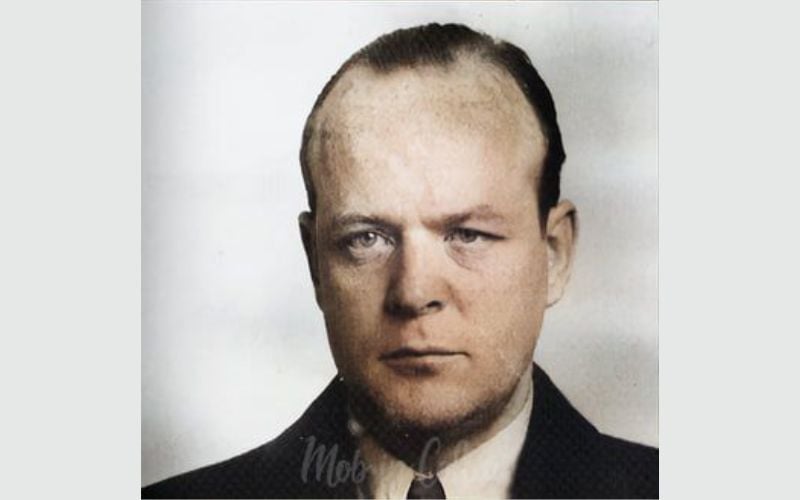| Mike Rafferty |
Coming two weeks shy of his 85th birthday and a year since he was proclaimed a national treasure in Washington, D.C. for sharing that tradition and weaving it into America’s tapestry, the passing suggested that his earthly work was done and he could leave us knowing that he had left his mark with so many who enjoyed his company and his music.
Rafferty’s wake and funeral last Thursday and Friday drew hundreds of mourners to his adopted home of Hasbrouck Heights in New Jersey, and the Church or Corpus Christi was packed on the beautiful sunny September Friday.
Many of the people who attended the Mass continued onto his gravesite in the shadows of the Meadowlands, and afterwards the repast meal offered by the Rafferty family.
Many of the younger musicians who were greatly influenced by the Mighty Raff gave us lovely music at the church and cemetery and also at the post burial celebration of Mike’s life led by his very close friends and protégées Willie Kelly, Jerry O’Sullivan and, of course, his daughter Mary.
It was apparent that Mike was regarded as a musical chieftain not only in these parts, but musicians came from Ohio, Rhode Island, Maine, Massachusetts, Maryland and Pennsylvania to pay their respects.
Rafferty’s music was the real deal and as close to the soil of his homeplace in Larraga near Ballinakill (the village of the church as Monsignor Charles Coen, an East Galway musical cohort of Raffertys told us at the Mass) as could be.
Handed down from his father Tom the musician and influenced by a fertile area of great musicians, it became known as fireside music, redolent of the important part and place it took on in Irish homes where their existence was hardscrabble and bleak but not their spirits.
The times after World War II were hard and forced emigration and thousands were sailing to Amerikay, including Rafferty in 1949.
He carried that music in his heart and head to ensure that ould Ireland would always be fondly remembered, but like so many others, he settled down, found work, married and made a family with his wife Theresa in New Jersey. They were his focal point for his early years in the U.S.
The winds of change and the folk music revival in the 1960s also saw a new cast of musicians arrive around New York, with a great emphasis on music from Galway and Clare with the likes of Sean McGlynn, Mike Preston, Martin Mulhaire and Joe Madden, who became a life-long friend of Rafferty and along with the others encouraged Mike to play more of his flute.
In 1976, Mick Moloney included Rafferty in an august gathering of Irish musicians from both sides of the Atlantic in the Smithsonian Festival of American Folk Life celebrating the American Bicentennial. It put traditional musicians on a platform with their own art form in a manner that hadn’t been done before, and Raff joined the early Green Fields of America tours around the country.
Rafferty and his music were a secret no more, and in the future thousands would be exposed to his handicraft.
Retirement from the day job allowed Rafferty to plow himself back into the music he grew up with, and loads of new tunes as well with his trusty tape recorder. That immersion and learning process also helped develop his own teaching style which was becoming more in demand both in Comhaltas Ceoltoiri Eireann and outside of it as he was able to travel a bit more to workshops and summer schools.
With the encouragement and enthusiasm of his youngest child, Mary, who took up the whistle, flute and accordion, Mike began a recording career that produced five albums touting his music and solidifying his place in the pantheon of Irish musicians.
Three were recorded with Mary, The Road to Ballinakill, The Old Fireside Music and The Dangerous Reel, where you could hear the tradition going from one generation to the next, culminating in Mary’s own solo CD, Hand Me Downs, most of which overlapped Mary’s time with Cherish the Ladies.
Mike’s own solo, Speed 78, with his spoken words and music produced by Mary’s husband Donal Clancy exemplified the folkloric character that Mike brought to the music.
His last recording, The New Broom, with his close friend and fellow musician Willie Kelly, firmly established a love and a need to appreciate the origins of the music and its timeless quality where the beauty of the melodies outshines flashy technique and speed.
Those recordings (www.raffertymusic.com) and Rafferty’s dedication to teaching and passing on the music were recognized by the National Endowment for the Arts in awarding him a National Heritage Award in September of 2010.
His work with Comhaltas (CCE) led to a branch named after him and further acknowledged the complimentary role of his fellow Galwegian and devoted friend Joe Madden when Madden’s name was added to the branch title last May.
These accomplishments established Mike Rafferty as a man of worth in Irish music, but in some ways they were just footnotes for a humble and shy man who was really in his element around his friends in Irish music.
Last week it was apparent to me that Rafferty’s real legacy was in playing and enjoying Irish music among people of all ages, and most especially the younger generations like in the Catskills.
That re-enforced his mission of keeping the chunes above ground as long as possible and beyond his own time with us. Watching and listening to so many musicians last week embracing that mission affirmed that for me.
And if America was fortunate enough to gain the heart and musical soul of Mike Rafferty from Mother Ireland then for 62 years, the favor has been returned now.
When Mary and Donal Clancy returned to Ireland a couple of years ago to rear their own children, it allowed Mary to keep teaching that “old fireside music” to a new generation around her Ring, Co. Waterford home. The circle is indeed unbroken, even if Mike Rafferty has found a better home in the sky.




Comments